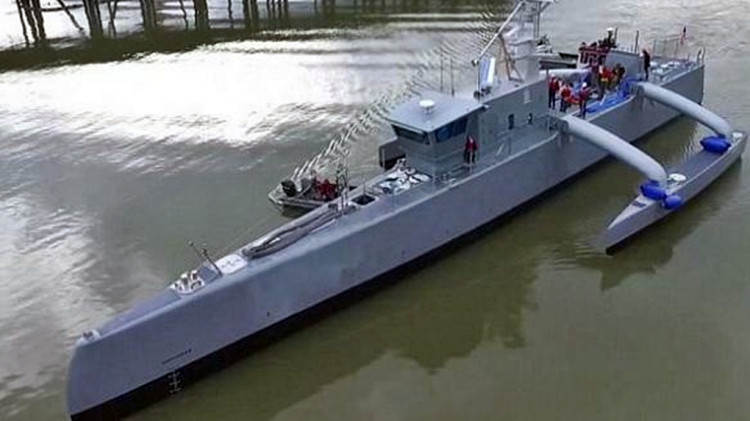The U.S. Navy will develop and deploy unmanned major surface warships in the future to maintain its maritime supremacy in the face of threats from Russia and China.
The Navy has not a single unmanned major warship in its current surface fleet. The only warship that fits this bill is "Sea Hunter," a small trimaran autonomous unmanned surface vehicle (USV) launched in 2016.
Sea Hunter, the world's first robot warship, was developed by the U.S. Defense Advanced Research Projects Agency (DARPA) as part of its Anti-Submarine Warfare Continuous Trail Unmanned Vessel (ACTUV) program. She was christened in April 2016 at Portland, Oregon.
Sea Hunter is classified as a Class III USV and designated a Medium Displacement Unmanned Surface Vehicle (MDUSV). In the 2020s, Sea Hunter will be armed and used for anti-submarine and counter-mine duties.
Sea Hunter is capable of patrolling 10,000 nautical miles of ocean without a human crew. It's scheduled to enter service with the United States Third Fleet this year.
The Navy intends to build on its experience with Sea Hunter and scale-up this sleek 40 meter-long trimaran to the size of a frigate.
Rear Adm. Ron Boxall Director, Surface Warfare (OPNAV N96), said the focus of his command will be to pack more sensors and weapons into warships so a smaller number of larger warships can act as command and control for smaller robot warships.
"If you think about what we are trying to do with the surface force, we have large and small surface combatants that will (ultimately make up part of the 355-ship Navy) but we have no requirement for unmanned surface vessels right now, which I see as an absolutely critical part of distributed lethality, distributed maritime operations environment that we are moving into," said Adm. Boxall. "Ultimately I need more nodes out there."
Adm. Boxall said N96 is looking closely at what might be needed for a large unmanned surface warship, much like Sea Hunter.
"I think these are what you need to go in the water and carry large things and be more places at less cost," according to Adm. Boxall. "So, in that nodal structure, we are looking at them becoming large sensors or large shooters, but we are still working out the requirement."
The Navy isn't developing large robot surface warships alone, however. Developing unmanned surface warships is a key component of a recent agreement with NATO forged during a defense summit in July.






